Archery Speed Shooting
Archery Speed Shooting
When it comes to hunting with the bow, consistency, accuracy, as well as strength to draw a humane draw weight are all important. However, when it comes to warfare in the ancient and medieval world, rate of fire also becomes an important factor. The speed at which the archer releases consecutive arrows becomes even more vital when the archer is mounted on a fast-moving horse or is firing from a chariot. Horse archers would typically be deployed in such a manner that they would quickly ride past the enemy loosing as many arrows as they could, then ride away before an appropriate response could be given. There is only so much time the mounted archer had. Only a small window of time was available to deliver a volley and regroup. This article discusses archery speed shooting, from ancient times to modern revivalists.
How Fast Could Ancient Archers Shoot?
As mentioned archery speed shooting was a desirable skill to have in the heat of battle. With plenty of practice and repetition, it would have become second nature. The mounted archers of Central Asia, notably the Turks and of the Middle East, specifically the Saracens were renowned for their speed shooting abilities.
Fortunately, several manuals and treatises have been compiled which describe the expectations of archers in the past. Some first-hand accounts of battles with skilled archers also help us shed some light on how fast archery speed shooters of the past got their shots off.
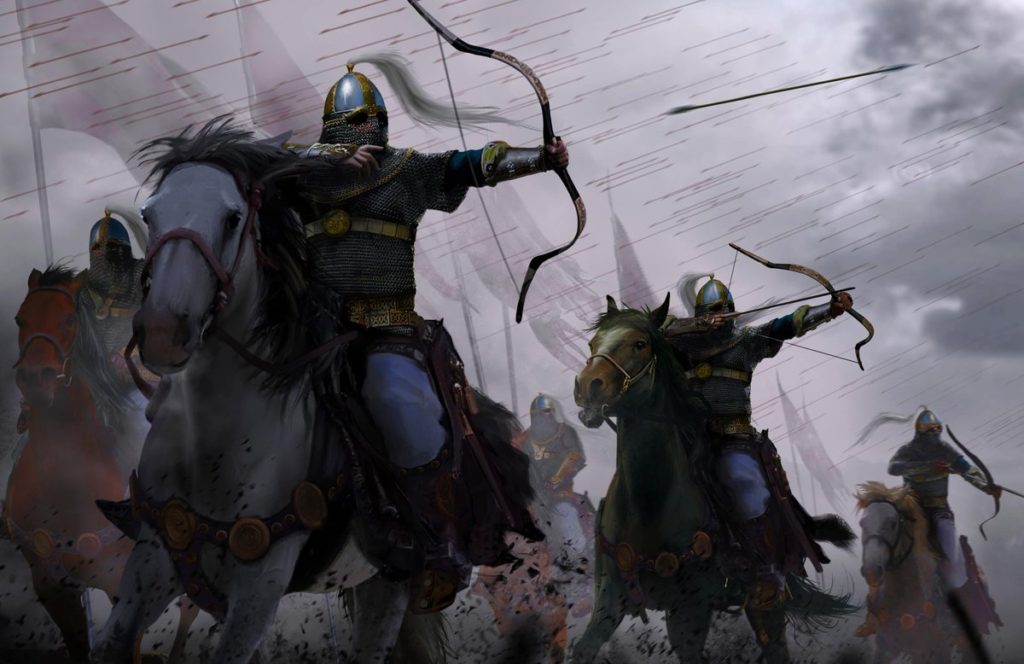
The Saracens
William of Tyre, long considered one of the best chroniclers of the Crusades writing of the Saracen’s prowess with the bow mentions “The Saracen cavalry… began to shoot thicker and faster than one could believe possible” (Smail 1995: 76)
The English translation of an archery manual written in 1369 titled “Saracen Archery” ( 1970 J. D. Latham and W. F. Paterson) describes the expectation of archery speed shooting in the following excerpt.
“Quickness and ease in using your hands are a commendable asset in battle. If you wish to
determine your dexterity and rate of shooting, you take three arrows and stand and shoot over
sixty bows’ distance (75 meters). If you can shoot the third and only see the dust of the first after that third arrow has already left your hand, you are fast enough. If you can’t, you must practice holding the arrows all together between your fingers and shoot in this way. You keep on practicing until you
achieve your goal.”
Considering most bows over a 30-pound draw weight can deliver average weight arrows at about 60 meters per second, this means you would have to be fast indeed! In fact, you would not have a full two seconds to loose three arrows.

More Archery Speed Shooting from the Past
Another tantalizing piece of literature that relates well to our topic of archery speed shooting is Munyatu’l-Ghuzat: a14th-century Mamluk-Kipchak military treatise. It is a 14th-century military treatise written in Mamluk-Kipchak Turkic and composed during the Mamluk reign in Egypt. The manuscript was translated to English by Kurtulus Öztopcu. It is preserved in the library of the Topkapi Palace Museum in Istanbul (Section: Ahmed III, No. 3468).
The text is thorough and discusses all aspects of warfare employed by the Mamluks during their height of power. The author describes the training progression of the mounted archer in the following manner:
“When you wish to start shooting arrows on horseback while riding, you should take a weak bow and arrows(s) which are good for this skill. Then erect five barcas [targets] that are following each other. The distance between each of them should be forty arshins. Then take fives arrows, ride your horse fast and shoot these one after the other. When you become good at shooting these, make the distance between them thirty arshins. Every time reduce (the distance between the barcas) like that until the distance is seven steps.” (Öztopcu 1986, 199)
An arshin is approximately 71 centimeters making 40 arshins about 28 meters. 30 meters or so is a typical distance between targets and/or points along the track where shots are taken on modern mounted archery courses. Taking this distance down to thirty yards let alone 7 steps, the archer would have to be a very fast shot indeed!
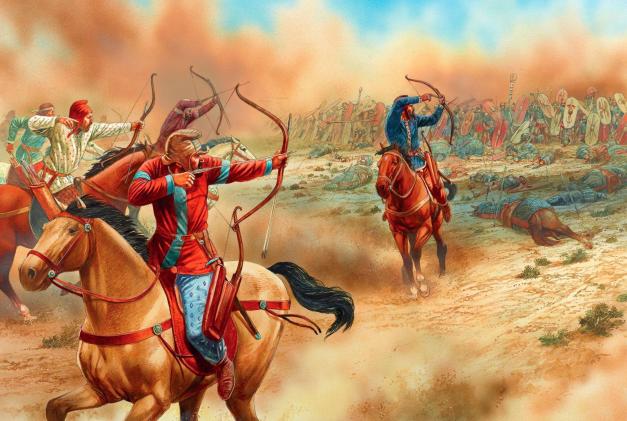
Rate of Fire of English Longbowman
Just to put into perspective the extremely fast rate of fire of the eastern mounted archer, let us consider the medieval English longbowman. English warbows were considerably heavier than the much shorter composites of the steppe nomad and other mounted archers of the past. A draw weight of 100 pounds would be considered average. Shooting with a bow of this weight, most modern war bow archers can achieve a rate of fire of about 10 arrows a minute. This is obviously a much slower rate of fire than the Saracens or Turks, yet the English longbow was used differently and has a much higher draw weight. In fact, draw weight is a serious consideration when involving yourself in archery speed shooting as we shall see in the following section.
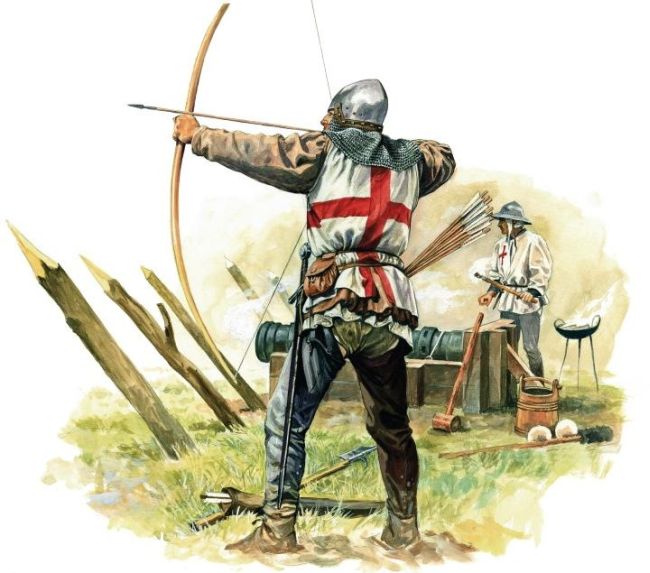
Considerations
Now let us look at some of the most important factors and considerations when it comes to archery speed shooting.
Draw Weight
Now when you see videos of Lars Anderson or Lajos Kassai loosing arrow after arrow in rapid succession, you may be asking yourself: what is the draw weight of the bow they are using? Well, the bows are definitely on the lighter end, around 35 pounds or so. It should come as no surprise that the heavier the bow, the more challenging it would be to shoot rapidly. A heavier bow would take longer to draw. Also, the archer would become fatigued faster, after fewer shots. Bear in mind that there would be a trade-off between the rate of fire and the energy deliverance of the arrow.
In a battle situation, the arrows would have to hit their mark and have some penetrative effect. It is worth considering that some ancient archers would have the ability and skill to shoot rapidly, yet because of the weight of a bow they were using in a combat situation, their rate of fire might have been slower than their maximum.
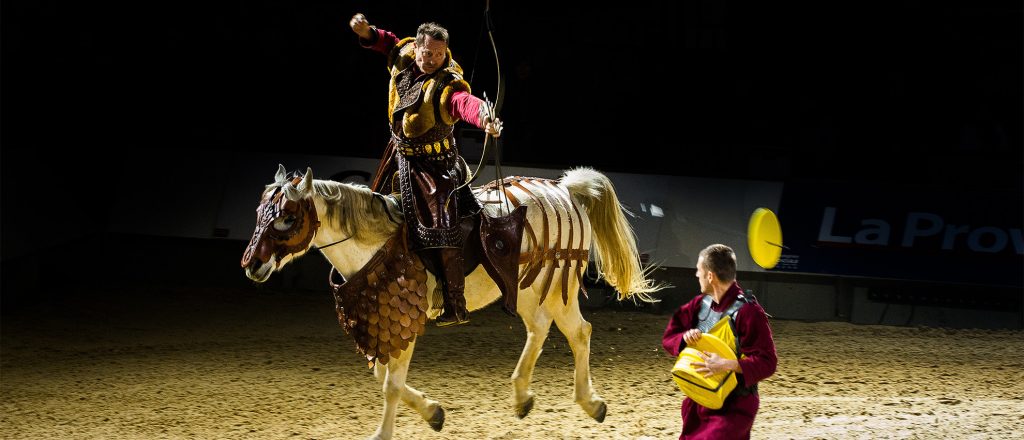
Reaching Full Draw
One of the major concerns regarding archery speed shooting is coming to full draw. This is especially concerning while mounted on a fast-moving horse. Drawing heavier bows that are used in battle requires great muscular exertion and a full draw is typically reached in a very controlled, gradual manner. Of course, there is little time for such gradual and deliberate movements in the heat of battle. The competent horseback archer must be able to draw a reasonable weight bow and reach full draw rapidly.
The 16th century Ming dynasty general and writer Qi Jiguang wrote: ‘When you teach mounted archery tell then: “You should ride like the wind… reach full draw and release quickly'”. (Loades, The Composite Bow 2016, Tian & Ma, The Way of Archery 2015, pg 123)
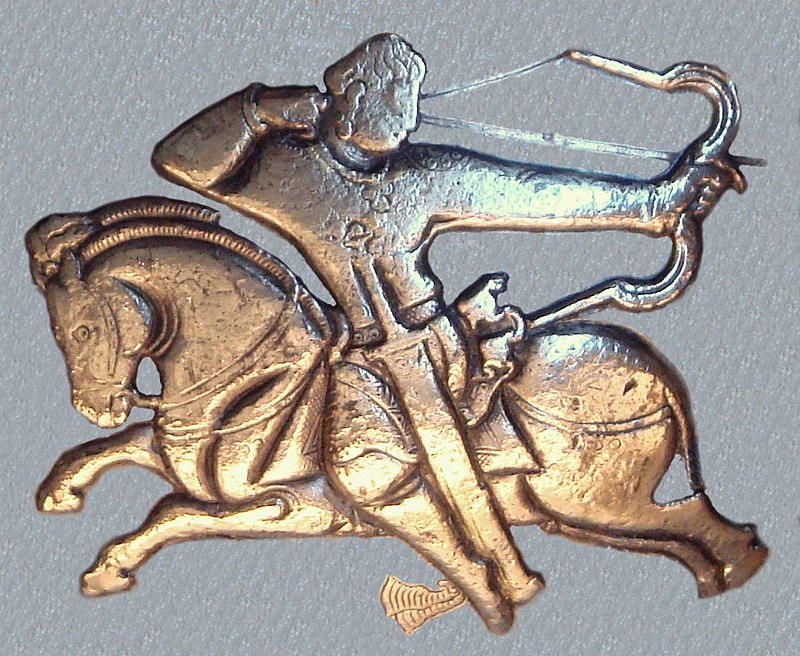
Nocking Arrows
The other major concern pertaining to archery speed shooting is the ability to quickly nock an arrow. This skill requires much practice, yet it is indispensable when it comes to shooting consecutive arrows rapidly. As previously mentioned, rapid discharge of several arrows in a short span of time is especially critical for the horse-archer. This requires great dexterity as well as practice. However, there are several techniques that have been developed to help make nocking and shooting faster.
Being able to take arrows from a quiver quickly was a useful skill. An obviously faster technique would be to have the arrows already out of the quiver, to hold extra arrows in either the draw-hand, bow-hand, or both.

The 16th-century manuscript “Arab Archery” describes some techniques for holding arrows in the hands for successive shooting.
“To shoot such an arrow, place it first in the palm of your hand and then hold its nock beneath your fingers- the little finger, the ring finger, and the middle finger- in a way resembling the count of nine. The arrowhead should point to the ground. You then slam its middle point, or the point marking a third of its length from the head, against the grip of the bow and, at the same time, push the arrow with the palm of your hand and receive it with your index finger and thumb. Then nock it, draw, and release. Others have said that it is better to slam the arrowhead against the grip.” (Arab Archery, Nabih Amin Faris & Robert Potter Elmer, Martino Publishing 2016, pg 151)
Other techniques are described in the manuscript whereby the archer holds the arrows between the fingers of the draw hand.
Arrows in the Bow Hand
There are disagreements among the authors of archery manuals of the past. Some are quick to dismiss the holding of extra arrows in the bow hand, while others advise this technique. Holding arrows in the bow hand is not favored by the author of Arab Archery as he is discouraged by the possibility that this would weaken the grip.
“A fourth method of shooting shower arrows [speed shooting] has been described by some professionals. This consists of placing the bundle of arrows in the left hand and gripping it along with the handle of the bow. But this is indeed wrong and results in no shower shooting. It is wrong because it renders the grip weak. It results in no shower shooting because the archer will have to release his hand in order to bring the next arrow into a shooting position.”
Regardless of differing opinions, holding arrows in the bow hand was a common technique. It is mentioned in texts as well as being depicted in art. Below is a carving of a Parthian horseman. He is at full gallop, ready to release his arrow. Barely visible due to erosion, he clutches several arrows in his bow hand.
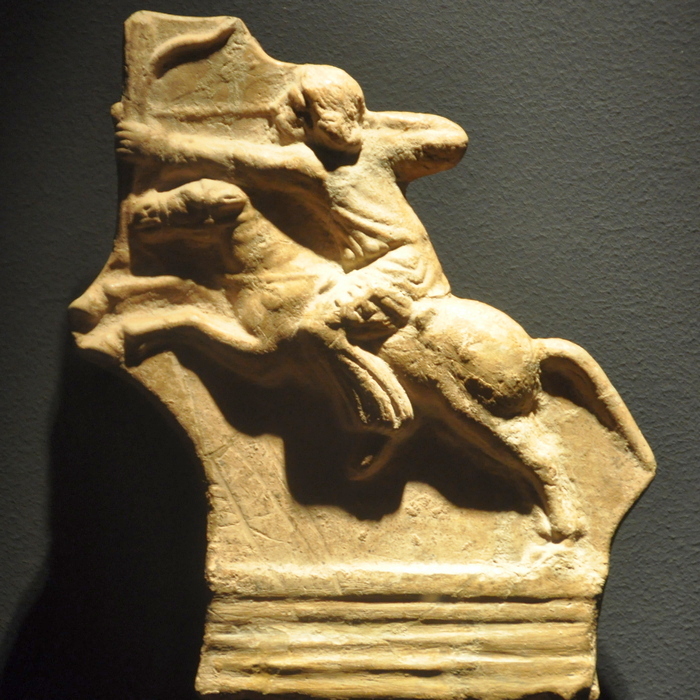
Holding an excess of two or three arrows in the bow hand would indeed have an effect on the grip. Yet, the manner in which horse archers were deployed, being in proximity to the enemy for only short amounts of time, a burst of two to four arrows would be sufficient.
Holding arrows in the bow hand is also common practice in many North American Native archery traditions. Below is an Apache drawing his bow.

Archery Speed Shooting Techniques
Now let us discuss some speed shooting techniques in further detail. So far, we have established that the fastest shooters all carried extra arrows for faster nocking. This was done by the bow hand, the draw hand, or both.
Technique 1: Holding arrows by the nock, in the draw hand
This technique is described above in Arab archery involves holding the extra arrows in the draw or string hand by the nocks. After and arrow is discharged the draw hand places another arrow against the grip where it is secured by the bow hand. The archer then proceeds to nock, draw and release the arrow and the process is repeated.
Kyudo or traditional Japanese archery has a technique whereby the archer holds an extra arrow in the draw hand by the tip rather than the nock.

Technique 2: Holding Arrow Nocks Between Fingers of the Draw Hand
This technique is less practiced these days. However, it is mentioned as a viable method of holding extra arrows in the draw hand. The extra arrows are held by the nocks, between the fingers, extending from the back of the hand.
This technique is also mentioned in Arab Archery. “Another way to do this stunt is by placing the arrows between the fingers of the right hand thus: the nock of each arrow between two fingers when the arrows are only three; if they be six, then place two arrows between each two fingers; or if they be nine, three arrows between each two fingers; or more as you are able” (Arab Archery. 2016, pg 152)
This seems like a precarious method. The weight of the arrows held upright extending from the back of the hand in this manner requires a very tightly secured squeeze of the fingers on the nocks. This can interfere with the draw. The arrows would also need to be extra secure if the archer is riding at full gallop on a horse.
Technique 3: Arrows Held at Midpoint Between Fingers, Fletching Towards Elbow
This is a more secure hold on the arrows than the other two previous methods. Because the arrows are already orientated with their tips forward, it can be a smooth motion to pass another arrow onto the bow hand then nock and draw.
The author of Arab Archery describes it thus: “A third way, which is faster than the two already mentioned, consists of taking three or six arrows, depending on your ability, and placing their middle points between the fingers of your drawing hand, while their nocks and feathers are along the inner forearm.” ((Arab Archery. 2016, pg 152)

Technique 4: Arrows in Bow Hand
As previously mentioned, this technique was known and used in ancient times. The author of Arab Archery and Gao Ying the author of 17th century Ming Dynasty archery manuals, disregard this method. They maintain that it weakens the grip.
Another technique found in the 14th-century military manual Munyetu’l-Guzat describes holding arrows in both the draw and bow hand.
“Take ten arrows that are suitable for this practice. Hold five of them together with the grip (of the bow) and insert (the other) five between the fingers of your right hand. When you finish shooting the arrows that were between your fingers, take the arrows next to the grip and insert them between your fingers, then shoot them as before. (Loades, The Composite Bow / Kurtulus Oztopcu 1986, 200)
Archery Speed Shooting Masters
There are some modern practitioners that have taken to the art of archery like the skilled masters of the past. In this section, we’ll look at some of the modern-day masters of archery speed shooting.
Lars Anderson
Now when it comes to speed shooting, you’ve probably heard the name Lars Anderson. Mr. Anderson is a Danish painter and writer by trade, as well as an accomplished archer.
After partaking in some serious LARP action in Denmark in 2003, Mr. Anderson caught the archery bug. Likely due to the fact that his first foray into archery was in a mock battle setting, his focus was on the archery techniques used in war. As already mentioned in this article, rate of fire was of great importance in battle.
Lars Anderson would go on to study the manuscripts describing archery in the ancient and medieval world. Some of these texts are mentioned in this article and include Arab Archery and Saracen Archery.
After much study and likely a good deal of practice, Lars put out his viral video that kickstarted his internet archery fame and controversy. It has almost 60 million views. Check it out below.
An earlier video by Lars:
Lajos Kassai
Lajos Kassai is a name familiar to most involved in horseback archery. Responsible for the revival of horse archery, Kassai adopted the practice into the modern sport. He has thought the sport and established horse archery schools the world over. Kassai is quite the accomplished archer, and holds several world records. Some of his more impressive records include:
- 2006: Riding 12 horses, Kassai Lajos did equestrian archery continuously for 24 hours during 661 competition runs, he achieved a total score of 15,596.43 points with 5,412 shots. His average point per standard competition (9 runs) was 212.35 points.
- 2009: In December, he set his fourth record in the Budapest Sports Arena. He shot 12 pieces of 30 cm diameter flying discs (thrown by his students) from the back of a galloping horse in 17.80 seconds.
Kassai uses a technique whereby a large number of arrows are held in the bow hand. He can arrange up to 12 arrows and the bow in his draw hand. In two fast motions, he is able to reload and discharge consecutive arrows very rapidly.
If you want to read more about Kassai we wrote an article on the master archer which you can read here.
Cozmei Mihai
Another skilled archer practicing the traditional styles is the Bulgarian Cozmei Mihai. He is quite skilled and rapid shooting and the video below is a good demonstration of Technique 2 mentioned above.
Murat Ozveri
Murat Ozveri has studied the ways of archery, specifically Turkish archery in great detail. Along with several academic accomplishments and published research relating to traditional Turkish archery, Murat is an accomplished archer himself. Below he explains some of the nuances of Turkish archery speed shooting.
Best Bow for Archery Speed Shooting
If speed is truly your aim, you should select a bow that will help you get the job done as best as can be. The best bows for archery speed shooting are the simplest. A traditional horsebow of a style that is based on a design used by archers who performed fast shooting would be a good choice. A Turkish or Saracen design comes to mind. A Persian, Hun or Magyar bow would also suffice.
One major thing to consider is the grip. You must have a grip that is exceptionally comfortable for you. This is especially true when holding multiple arrows as well as the bow in your hand. There is no real alternative to find which grip suits you the best, other than gripping a bow yourself, with multiple arrows at the same time, and seeing how it feels in your hand.
Other than the grip, the other consideration is the draw weight of the bow. It should be light. All manuals mention starting with a light bow, especially when mastering advanced techniques. A draw weight of 30 pounds is a good starting point for most beginner archers.
Check out our archery shop here!
Archery Speed Shooting Records
According to Guinness World Records, the fastest time to shoot 10 arrows is 48.63 sec and was achieved by Arjun Ajay Singh (India) in Varanasi, Uttar Pradesh, India, on 5 August 2020.
